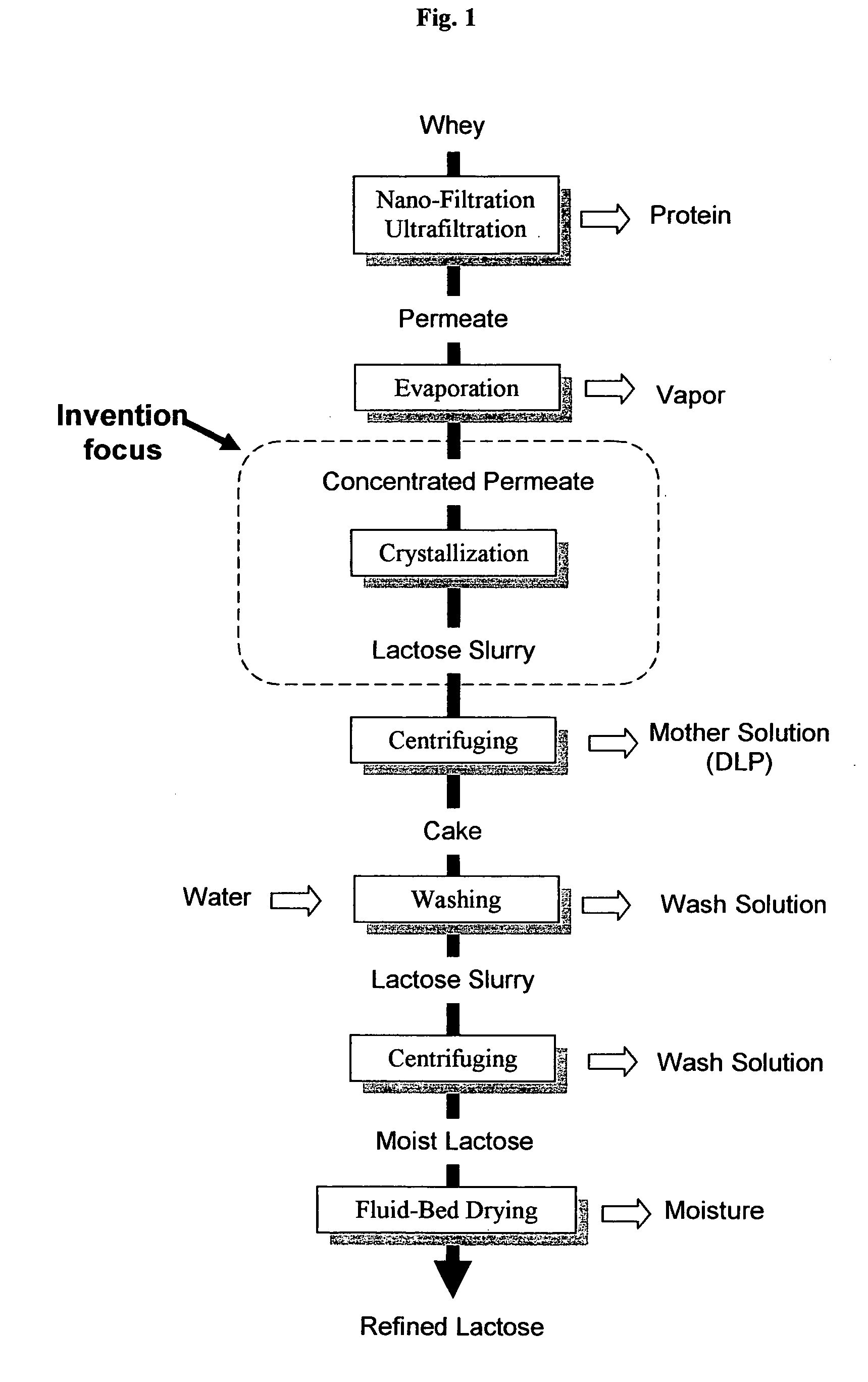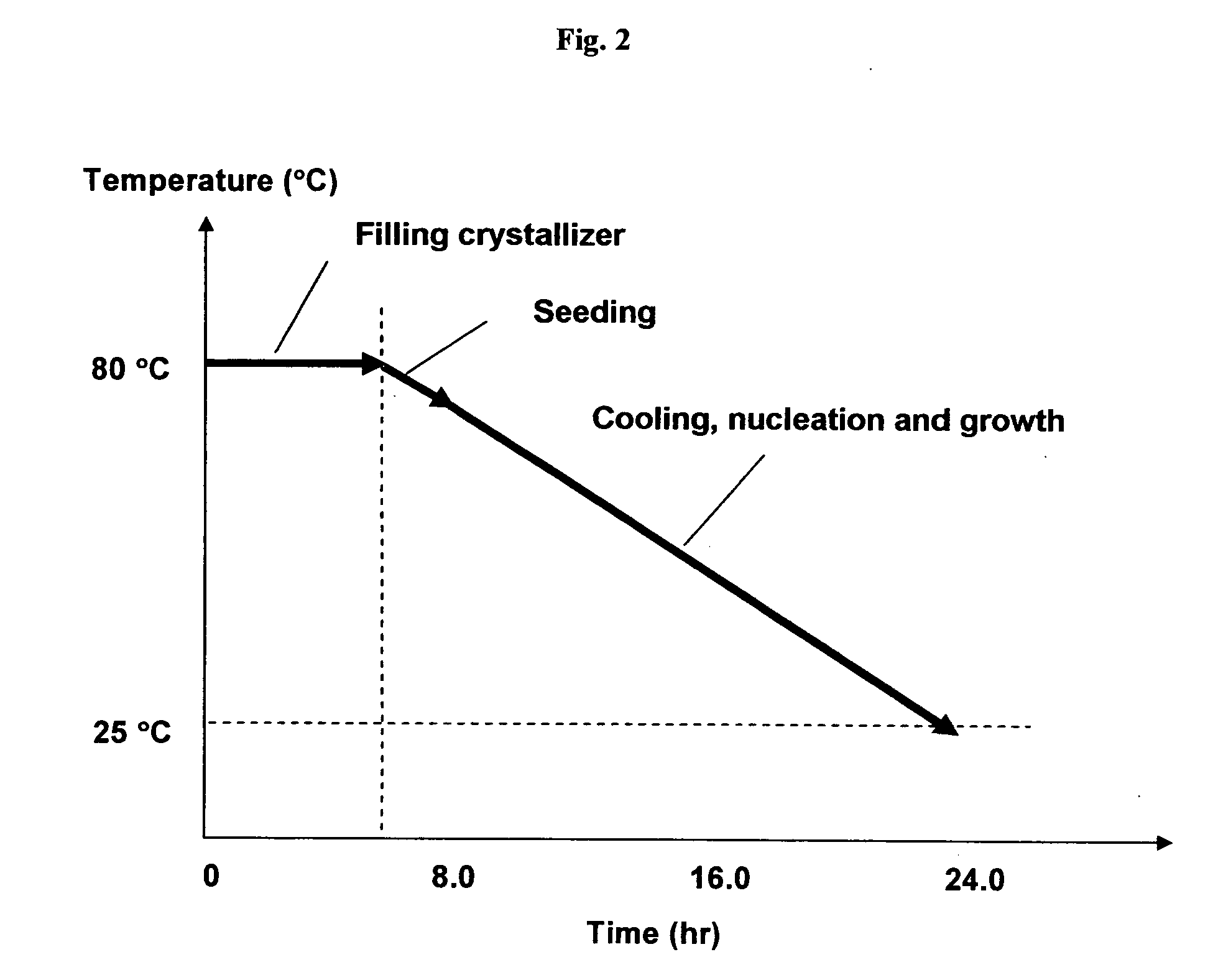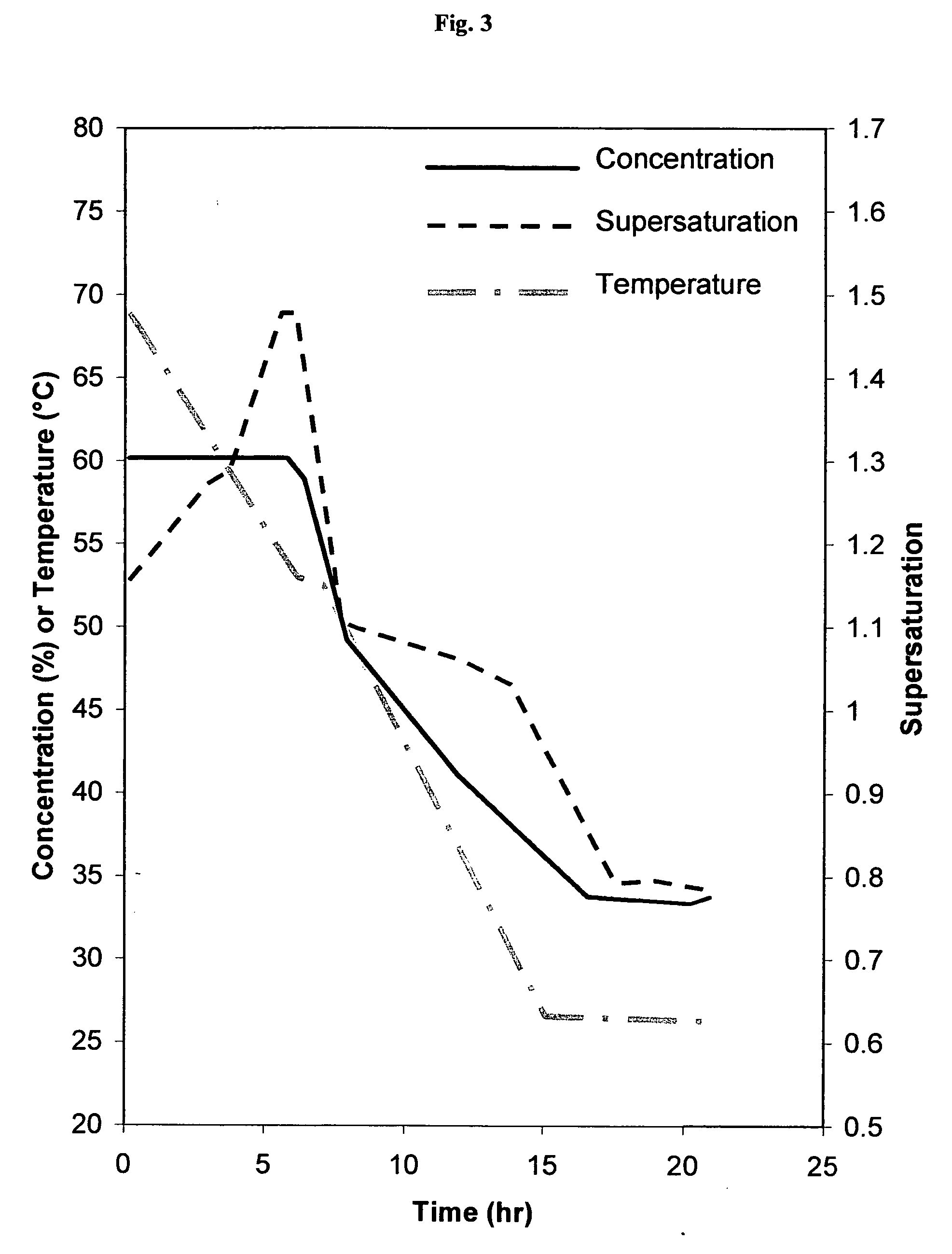Crystal refining technologies by controlled crystallization
- Summary
- Abstract
- Description
- Claims
- Application Information
AI Technical Summary
Benefits of technology
Problems solved by technology
Method used
Image
Examples
Embodiment Construction
[0069] The present invention relates to methods of making crystals from raw materials. In a specific embodiment, the present invention relates to methods of improving crystal production from lactose monohydrate. Broadly, the methods of the present invention involve:
[0070] (A) Preparing a batch of a suitable number of nuclei per unit mass (g) of solution for growth based on 1) a batch of lactose nuclei that can be instantly generated by induction followed by simultaneous growth in a supersaturated solution, 2) the number of initial lactose nuclei by induced nucleation that can be quantitatively controlled, and 3) the induction process that is used such as seeding, contacting or a combination thereof. The suitable number of nuclei are based on these factors and other factors or conditions described herein.
[0071] (B) Providing optimal operating conditions (concentration, temperature, nuclei number, etc.) for a controlled induced nucleation, allowing crystals to grow at a maximum mass...
PUM
| Property | Measurement | Unit |
|---|---|---|
| Temperature | aaaaa | aaaaa |
| Temperature | aaaaa | aaaaa |
| Temperature | aaaaa | aaaaa |
Abstract
Description
Claims
Application Information
 Login to View More
Login to View More - R&D
- Intellectual Property
- Life Sciences
- Materials
- Tech Scout
- Unparalleled Data Quality
- Higher Quality Content
- 60% Fewer Hallucinations
Browse by: Latest US Patents, China's latest patents, Technical Efficacy Thesaurus, Application Domain, Technology Topic, Popular Technical Reports.
© 2025 PatSnap. All rights reserved.Legal|Privacy policy|Modern Slavery Act Transparency Statement|Sitemap|About US| Contact US: help@patsnap.com



